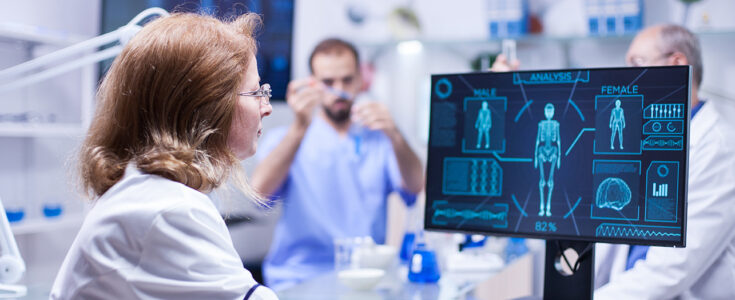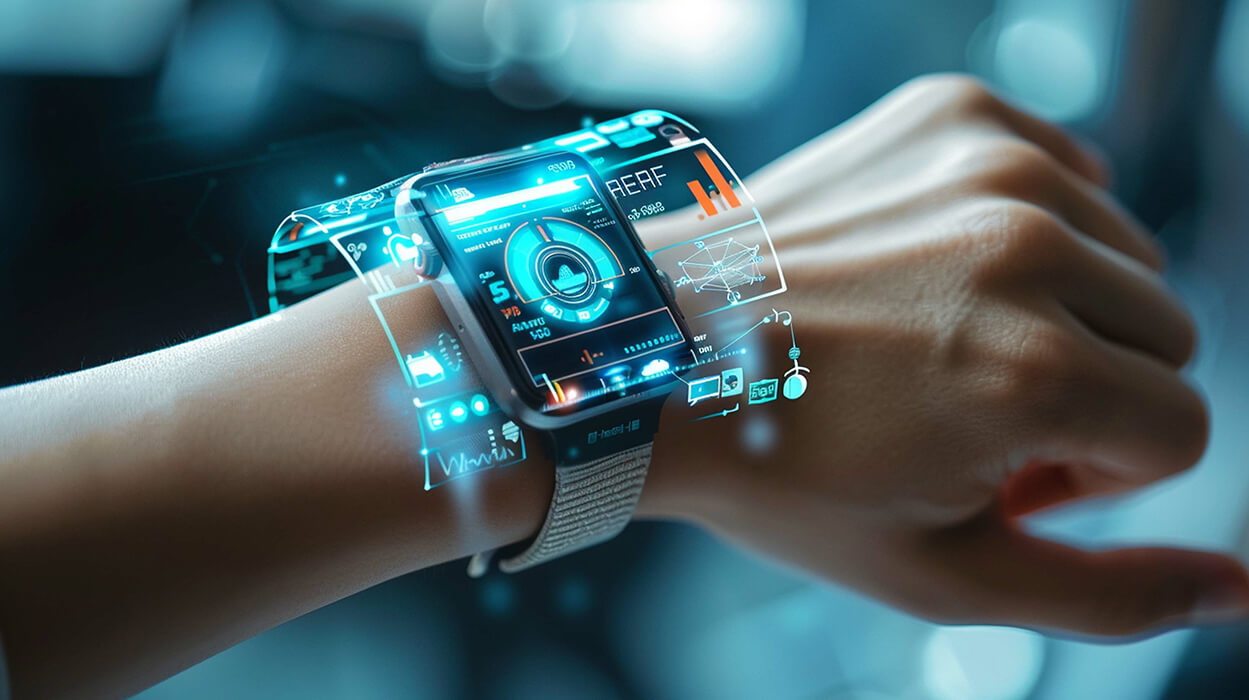
Remote Patient Monitoring: Empowering Healthcare Beyond the Hospital

Introduction:
Imagine healthcare that extends beyond the four walls of a hospital, seamlessly following you wherever you go. Remote patient monitoring (RPM) is this vision becoming a reality.
RPM is a sub-category of telehealth that utilizes technology for providers to collect patient-generated health data (PGHD) using mobile medical devices outside traditional healthcare settings. This allows providers to monitor their patients’ health conditions remotely and efficiently maintain the “Continuum of care” that will significantly improve patient health outcomes.
Here’s how it works: Providers utilize mobile medical devices to gather valuable patient-generated health data (PGHD) directly from patients’ homes. This data includes vital information like blood pressure, heart rate, and oxygen saturation. Once recorded by the RPM device, this data seamlessly flows to the provider’s electronic health record (EHR), accessible on their computer, phone, or tablet, enabling providers to monitor the patient’s condition remotely.
Also Read: Fine-Tuning AI as a Catalyst for Medical Innovation
How RPM is Helping ‘Everyone’
RPM improves the patient’s understanding of their health conditions and motivates them to take a more active role in managing their health, leading to better health outcomes.
This translates to several key benefits:
- Excellent Patient Engagement Strategy:
RPM enables providers to engage their patients by encouraging them to manage and understand their own health conditions. Thus, motivating them to look after their health. - Improved “Care Quality” and “Continuum of Care”:
RPM allows providers to readily access patient data anytime and anywhere. They get real-time notifications of any incident, such as a sudden spike or fall in any vital. This improves the quality of care and continuously monitors the patient’s health, which in turn helps to improve the patient’s health. - Increased Patient Satisfaction:
RPM fosters a sense of security and empowerment in patients, as they can stay up-to-date on their health and maintain constant communication with their care team. - Improved Revenue Streams:
For providers and payer organizations, RPM presents an opportunity to achieve the “Quadruple Aim” in value-based care. This framework emphasizes improved health of the population, reduced healthcare costs, better patient experience, and a more efficient care delivery system. By effectively utilizing RPM, providers can qualify for reimbursements and incentives established by organizations like CMS. - Reduced Healthcare Costs:
Studies have shown that RPM can significantly reduce healthcare costs by minimizing unnecessary hospital visits and readmissions. For instance, RPM helped reduce hospital readmissions by almost 20% for patients diagnosed with heart failure, while another study discovered that drug adherence increased by 20% in COPD patients, which helped patients significantly reduce their healthcare expenses.
Also Read: Empowering Discovery: The Role of RAG Architecture & Generative AI in Healthcare & Life Sciences
What new technologies are being introduced?
RPM technologies have been around for quite some time and have become increasingly popular among patients and providers. However, RPM technologies still need to mature. They’re on a steady path of growth and are embracing advancements like:
- AI/ML
- AR/VR
- Blockchain
Also Read: What Patients Need to Know About the Role of Digital Twins in Personal Health Management
Artificial Intelligence and Machine Learning in RPM:
We’re all aware that AI/ML has not only enhanced existing processes that once seemed to take an eternity to complete into something that can be achieved in a matter of seconds. It has also unlocked boundless opportunities across various digital technology domains, with healthcare standing out as a prime beneficiary of this transformative potential.
- The integration of artificial intelligence into RPM is revolutionizing healthcare by improving patient care, enhancing efficiency, and allowing early intervention by providers.
- By using AI algorithms, the potential of RPM has increased by multiple folds by analyzing vast amounts of PGHDs to detect trends, anomalies, and potential issues in patient health.
- Use case: One of the most impactful applications of AI in RPM is predictive analytics, which uses AI/ML for the early detection of health deterioration. This is a critical aspect of patient care, especially for patients who suffer from chronic conditions. It is a powerful tool that utilizes AI for RPM to identify high-risk patients who may suffer from adverse health events. By analyzing PGHDs and their pattern, AI-driven RPM systems can help in forecasting potential adverse events and enable providers to intervene proactively and prevent them.
Also Read: Creating Data-Driven Digital Front Doors for Healthcare Payers
Augmented Reality (AR) and Virtual Reality (VR)
In today’s digitally connected world, where over 3 billion people have access to high-definition cameras on their cell phones, connectivity has reached unprecedented levels. This accessibility empowers healthcare providers to seamlessly connect with patients through high-definition video calls.
With the introduction of AR and VR, RPM can now be transcended by adding enhanced visual cues for providers and patients when they interact. When clubbed with computer-enhanced vision, which uses AI to analyze and identify a patient’s surroundings, these technologies can take virtual healthcare communication to a whole new level, thus making standard in-person visits a thing of the past.
Augmented Reality (AR) and Virtual Reality (VR) technologies transcend geographical barriers, enabling remote delivery of healthcare services and enhancing the care experience for both patients and providers.
Also Read: Payer’s Guide to Implementing Price Transparency for Better Healthcare Outcomes
Blockchain in RPM
In RPM, various stakeholders, including platform providers, care management teams, and patients, collaborate within a connected ecosystem, each responsible for safeguarding sensitive information to prevent data breaches and ensure uninterrupted patient monitoring.
Blockchain is a shared, decentralized, and immutable ledger that facilitates the process of recording transactions shared by all participants across a peer-to-peer network. Thus, healthcare administrators and researchers are motivated to analyze the ability of implementing Blockchain to secure health data in RPM.
In a study conducted by Hathaliya et al. in 2019, a Permissioned blockchain-based healthcare architecture was proposed to solve the data security challenges in RPM systems. The study’s focus on integrating decentralized AI with blockchain networks and its application in healthcare underscores the potential of Blockchain in securing health data transactions between patients and providers over monitoring technologies like cloud, fog, and edge computing. In another study conducted by Faruk et al. in 2021, he proposed an Ethereum-based data repository for RPM-related health data shared with EHRs. The data repository allowed for secure upload, storage, analysis, retrieval, and transmission of patient health data based on patient instructions. Thus, making Blockchain-enabled RPM data more secure and robust towards unauthorized access and data breaches.
What is trending in the RPM space?
- Implementation of “Remote Patient Management” Programs:
Providers have begun transforming “Remove Patient Monitoring” to “Remote Patient Management,” such as “Centralized Virtual Care Departments,” which are being implemented by providers that use tools to go beyond monitoring and help in the active management of patients.Under this model, when a patient is discharged, the care manager can turn on the risk score within their EHRs, which analyzes discharged patients’ risk of readmission. Based on the risk scores, the provider then refers these patients to the virtual care team to simplify the transition from hospital to home.
- Continuous monitoring:
Most RPM systems currently operating are capable of measuring patient vitals at certain defined times of the day. However, a pilot program by KLAS is now exploring the benefits of continuous monitoring and extraction of patient vitals data, which can be helpful in high-risk patient groups. - Prioritization of Health Equity in the U.S:
The CMS released an updated framework for health equity that requires providers to possess high standards in care delivery to specific sections of the population that are deprived or unable to access quality healthcare services.For instance, Federally Qualified Health Centers (FQHCs) have become an important health safety net for providing healthcare services to underserved areas or populations in the U.S. These outpatient clinics qualify for specific reimbursement provisions under Medicare and Medicaid Federal programs.
Since FQHCs are located in areas with a scarce population and witness a shortage of healthcare providers, they have witnessed an increasing focus on implementing RPM technology, which allows providers to efficiently monitor and stay connected with patients.
Additionally, CMS released its final rule for Medicare-related payments under the Physician Fee Schedule in 2024, which allows FQHCs to claim reimbursements for the delivery of RPM services. This change took effect on January 1, 2024, thus empowering FQHCs to expand access to healthcare in remote areas and further increase health equity amongst underserved populations.
- Increased focus on “Interoperability”:
CMS is making a major push for the adoption of the 21st Century Cures Act by the Office of the National Coordinator for Health Information Technology (ONC). The act is designed to support the access, exchange, and use of electronic health information seamlessly and securely, thus benefiting both healthcare providers and patients.Under this, increased efforts are being put towards making RPM a key part of a more open and integrated healthcare ecosystem that seamlessly integrates with major EHRs. Hence, vital electronic data is being provided to providers and care teams that can be used to monitor progress efficiently, make accurate treatment decisions, and ultimately improve health outcomes.
-
Increased demand for “Personalized” care among patients:
Over the past decade, healthcare has witnessed a significant shift in technology, and so has patient behavior. Patients prefer having greater control over their health. They tend to have stronger demands regarding how they would like to communicate with their providers and interact with medical Store software devices.This shift in patient expectations is unsurprising, as they are healthcare consumers. Like consumers of other markets, they prefer a more personalized experience by leveraging newer technologies like big data, AI/ML, and predictive analytics.
As technology evolves, RPM systems will have to be personalized and intuitive for patients, motivating and empowering them to manage their wellness.
What value can we bring?
At Apexon, we understand that the future of healthcare lies in personalized, predictive remote care. That’s why we leverage our team of top talents, with expertise in both technology and healthcare delivery, to empower you with the most advanced RPM solutions.
Here’s what we offer:
- Next-Gen Interoperability:
We develop advanced RPM systems that seamlessly integrate with your existing infrastructure. This ensures vital health data flows effortlessly into electronic health records (EHRs), allowing providers to make informed decisions and deliver superior care. - AI and Predictive Analytics Expertise:
We are at the forefront of AI and machine learning integration in RPM. Our solutions leverage powerful tools to analyze vast amounts of patient-generated health data, identifying trends, anomalies, and potential health issues. This allows for proactive intervention and personalized care plans, ultimately improving patient outcomes. - 24/7 Remote Monitoring:
We champion the power of continuous patient monitoring. Our solutions enable real-time data collection, keeping providers informed and patients engaged in their health management.
We are passionate about empowering providers and patients with the tools they need to achieve better health outcomes.




